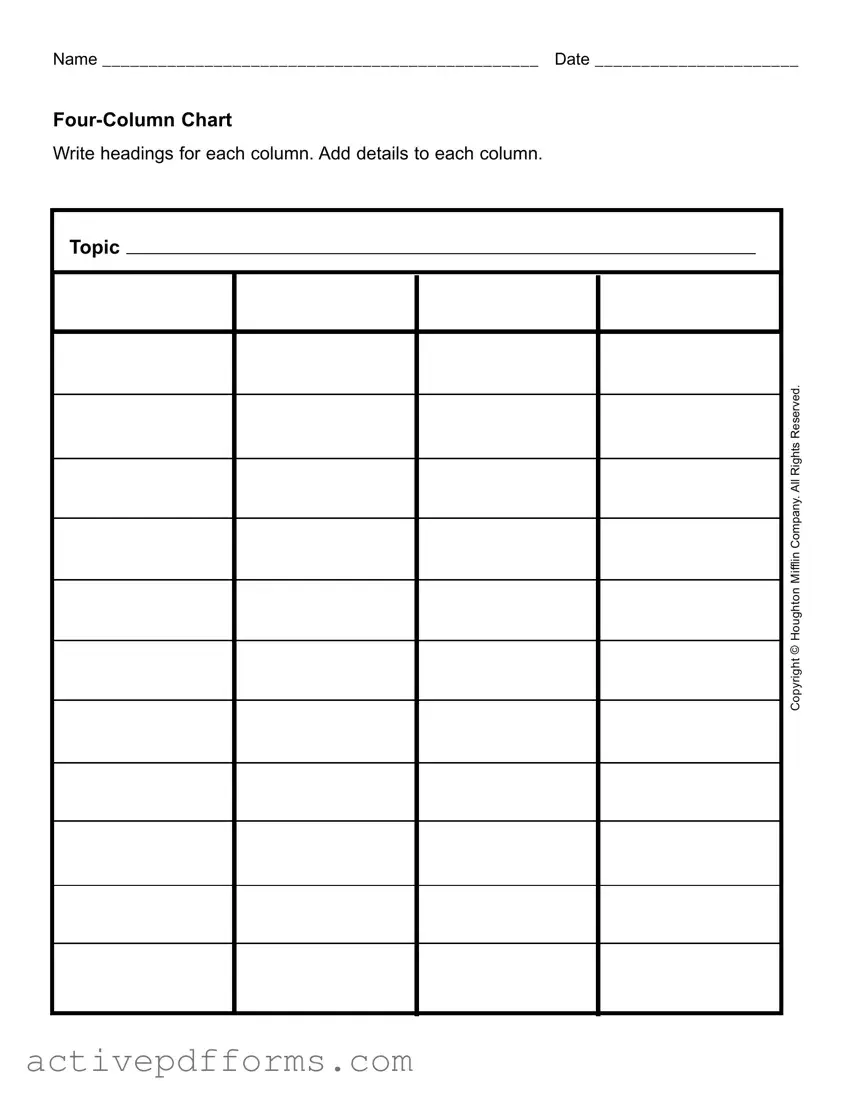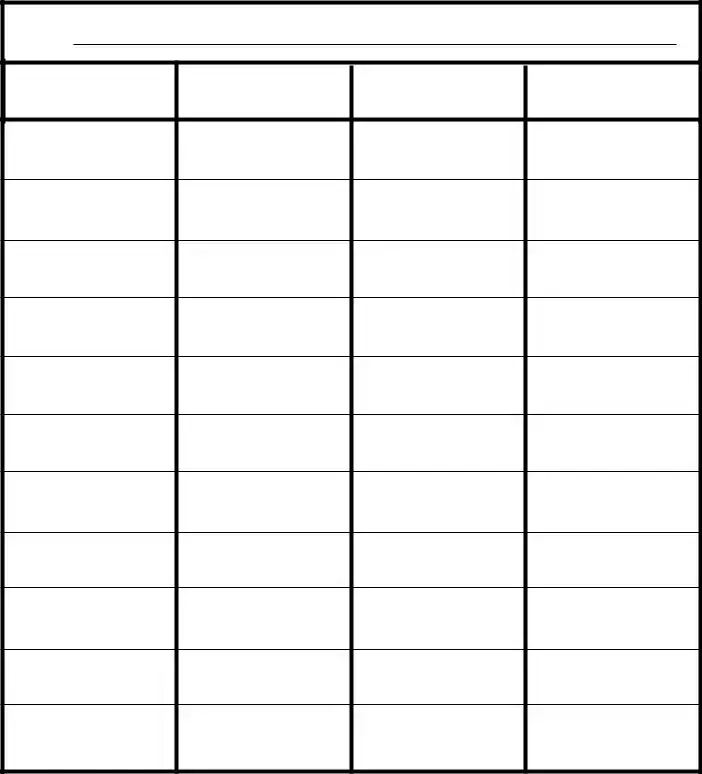Effective organization and presentation of information can greatly enhance the understanding and absorption of knowledge in both academic and professional settings. A Four-Column Chart serves as an invaluable tool in achieving this goal by providing a structured format for categorizing and detailing information. This form, widely used across various fields for its simplicity and clarity, allows users to easily categorize data under four different headings, making the comparison and analysis of different sets of information straightforward. Whether it is for summarizing research findings, planning projects, or organizing discussion points, the versatility of the Four-Column Chart is evident. By requiring users to write headings for each column and then add relevant details, it fosters critical thinking and helps in the meticulous breakdown of complex subjects. This format, as specified in the file which includes placeholders for the user's name and date to ensure personalization and responsibility for the information presented, is protected under copyright by Houghton Mifflin Company, highlighting its proprietary design and the value attributed to structured informational tools in educational and corporate environments.

